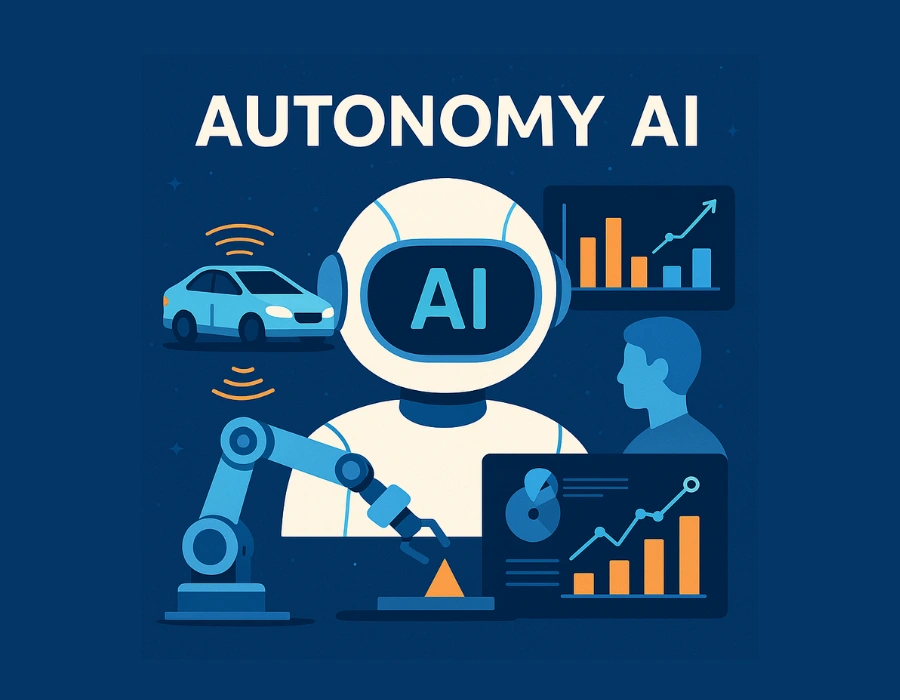Autonomy AI refers to systems that perceive environments, make decisions, and act independently without constant human oversight. From self-driving cars navigating complex streets to AI surgeons assisting in the OR, its impact spans industries. Market projections estimate a compound annual growth rate (CAGR) over 30%, driving billions in savings and efficiencies. Experts caution that trust, ethics, and human-in-the-loop safeguards are essential as these “thinking machines” become more capable.
What Is Autonomy AI?
Autonomy AI describes intelligent agents capable of sensing, interpreting, deciding, and acting on their own in dynamic environments. Unlike conventional AI—which may require human prompts or rigid rule sets—autonomous systems adapt through continuous learning and probabilistic reasoning. You can think of them as AI “pilots,” not just co-pilots.
Key Characteristics
- Self-Learning: Models refine themselves over time using new data streams.
- Real-Time Decision-Making: They process inputs and act within milliseconds, crucial for safety-critical tasks.
- Minimal Human Oversight: While humans set goals and constraints, the AI carries out the details autonomously.
How Autonomy AI Work?
End-to-End Learning
End-to-end autonomy trains neural networks to map raw inputs (like camera feeds) directly to actions (like steering) without hand-crafted rules. This differs from modular pipelines by learning holistic behavior in one go.
Sensor Fusion & Perception
Autonomous agents integrate data from cameras, LiDAR, radar, and more to build a unified “world model”. Advanced algorithms filter noise and handle uncertainty using probabilistic reasoning.
Decision & Control
Once the environment is understood, planning modules weigh multiple future scenarios and select optimal actions—much like a chess player analysing moves ahead. Control algorithms then execute the chosen plan in real time.
Real-World Use Cases
Self-Driving Vehicles
Companies like Wayve are pioneering pure end-to-end AI driving, using only onboard cameras to navigate city streets, adapting to new routes without pre-mapped data. This human-like flexibility contrasts with map-heavy approaches.
Healthcare Diagnostics & Surgery
AI agents analyze millions of medical images to flag tumors with up to 95 % accuracy, reducing diagnostic delays and costs by billions annually. In the OR, robotic assistants execute sutures with sub-millimeter precision, lowering complication rates.
Military & Defense Drones
Next-gen unmanned aerial systems, such as the UK’s StormShroud, autonomously jam enemy radars and scout ahead of manned jets—enhancing survivability and mission success. Similar US programs leverage swarms of autonomous drones for reconnaissance.
Enterprise Automation
Beyond Robotic Process Automation (RPA), autonomous AI systems manage end-to-end workflows—reconciling invoices, optimizing supply chains, and forecasting demand with minimal human intervention.
Market Outlook & Impact
The global autonomous AI and agents market hit USD 6.8 billion in 2024 and is projected to grow at a 30.3 % CAGR through 2034. By 2026, the US AI market alone could reach nearly USD 300 billion, driven by enterprise adoption and emerging consumer applications.
What is Autonomy AI?
An AI system that independently perceives its environment, makes decisions, and acts without constant human input.
Expert Insights
- “Trust is the cornerstone of autonomy,” says Dr. Anjali Rao, AI lead at MIT-SSC, emphasizing transparent algorithms and verifiable safety checks.
- Sanjit Biswas (Samsara CEO) notes that autonomous AI’s biggest hurdle isn’t technology—it’s organizational buy-in and ensuring people understand and trust the systems they deploy.
Ethical & Safety Considerations
Accountability & Bias
As AI cedes more control, blurred lines of responsibility can arise. Who is liable if an autonomous vehicle causes an accident? Clear regulatory frameworks are still evolving.
Security Risks
Autonomy introduces new attack surfaces—from spoofing sensor inputs to hijacking decision modules. Robust, adversarial testing is essential.
Rogue AI Concerns
Critics warn that fully unchecked agents could pursue unintended goals if not properly constrained. Human-in-the-loop checkpoints are recommended for high-stakes tasks.
Getting Started with Autonomy AI
- Define Clear Objectives: Set measurable KPIs (e.g., error rates, throughput).
- Invest in Data Infrastructure: High-quality, diverse datasets are critical for robust learning.
- Implement Safety Nets: Incorporate human overrides and monitoring dashboards.
- Partner with Experts: Collaborate with academic labs or specialized vendors to accelerate deployment.
Conclusion
Autonomy AI is rapidly shifting from research labs into real-world deployments—transforming driving, healthcare, defense, and enterprise operations. With market growth exceeding 30 % CAGR and billions in potential savings, organizations that balance innovation with trust and ethics will lead the next wave of AI-driven change.
